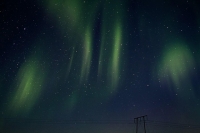Our interviewees agreed that looking at the night sky is like looking through a time machine - the Andromeda galaxy is the farthest object we can see with our naked eyes, and when that light reaches us, it’s 2.5 million years old. During this meeting with Bob as well as Stargazers John Buntin, Peter Chow, Steve Marshall, and Vic Vargo, we discussed the wonders of astronomy and the upcoming celestial events for 2021 that community members can look forward to. So, why should you look up?
Before we ponder the why, we should cover the how. When looking up at the sky, if an event can’t be seen with the naked eye, a simple pair of binoculars goes a long way! You don’t always need a big fancy telescope to enjoy the magic of the cosmos. Also, whenever looking at events on or around the sun - NEVER look directly at the sun - ALWAYS use solar filtered glasses or lenses.
So, what can we look forward to this year? There are three eclipses coming our way for 2021 that Bob is most excited for! The first one will be on May 26th. This partial lunar eclipse will be best seen by early morning risers as it starts at 4:45am just before sunrise. The shadow seen covering the moon is made by the Earth as it passes between the moon and sun. The next eclipse will be on June 10th beginning with the sunrise at 5:12am. Unlike May’s lunar eclipse, this annular solar eclipse occurs when the moon casts a shadow on the Earth as it passes between the Earth and sun. The moon will cover the center of the sun, leaving a ring of light, or annulus which is where this eclipse’s name comes from. Finally, there will be a near total lunar eclipse occurring on November 19th in the middle of the night with its peak at 3:03am. Infographics provided by the Milwaukee Public Museum below give some more detail on these upcoming eclipses.
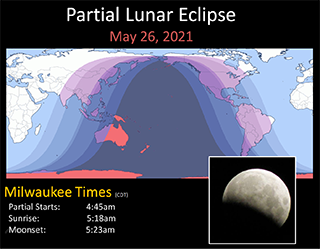
Figure 1: Partial Lunar Eclipse, courtesy of the Milwaukee Public Museum
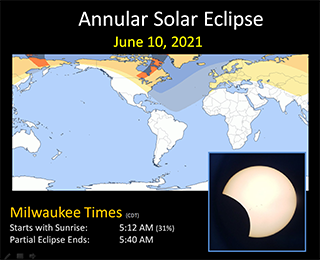
Figure 2: Annular Solar Eclipse, courtesy of the Milwaukee Public Museum
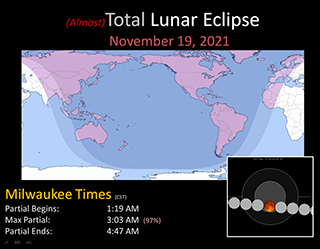
Figure 3: Total Lunar Eclipse, courtesy of the Milwaukee Public Museum
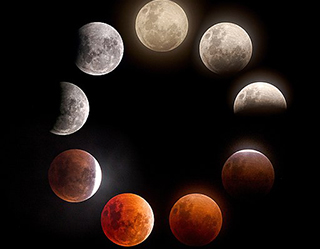
Christian Gloor from Wakatobi Dive Resort, Indonesia
The aforementioned eclipses are admittedly not happening at the most convenient times. So, what if you can’t see them? What other events can you look forward to? John is excited to see Saturn and Jupiter positioned in opposition this August. When Saturn or Jupiter are in opposition, you can draw a straight line connecting them with Earth and the sun. Planets at opposition rise when the sun sets and can be found somewhere in the sky throughout the entire night. Planets at opposition tend to be near their closest point to Earth in orbit. At such a time, the planet is brightest, and more detail can be seen through telescopes. Since the sun and outer planet are directly opposite each other in Earth’s sky, we see that far-off planet’s fully lighted daytime side. Fully lit planets appear brighter to us than less-fully-lit planets. Saturn will be in opposition on August 1st and Jupiter will be in opposition on August 19th - head to the lakefront or a park with sky access to check them out. (Binoculars are great for this!) Similarly, Venus will be in the evening sky all summer, appearing in May until the end of the year. It should be easy to find given that, according to a fun fact from Bob, “Venus is the brightest thing in the sky and the number one reported UFO!”
Steve is excited to see Mars sitting directly in the middle of the Beehive Star Cluster on June 23rd. Low in the NW sky at dusk, look for a bright reddish star and use binoculars to see a cluster of about 60 stars surrounding Mars! Steve will also be completing the “Messier marathon” this summer. Messier objects are “fuzzy” items seen with a telescope when looking for comets - they are non-comet objects that can be galaxies, open star clusters, planetary nebula, and more. The Pleiades star cluster is an example of a Messier object. Steve will be attempting to spot all 110 Messier objects this summer!
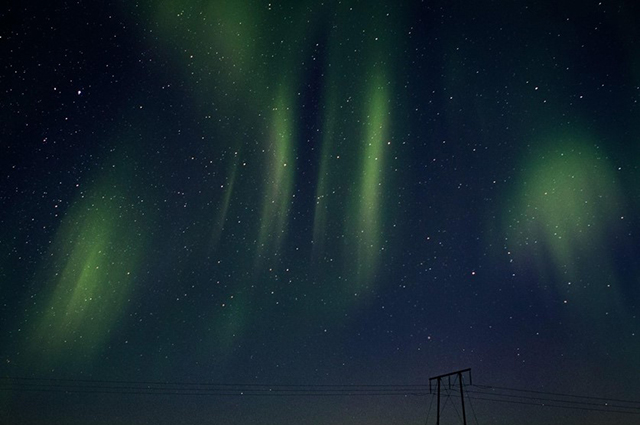
Aurora Borealis in Iceland
Peter is on the hunt for auroras this year. Auroras, also known as the Northern/Southern Lights, are dancing, colorful lights near the Earth’s Northern and Southern poles that occur when electrically charged particles from the sun enter the Earth’s atmosphere colliding with gaseous particles like nitrogen and oxygen. The further north you go, the more likely you are to see them. Auroras are unpredictable given that they only occur when there is a storm on the sun, so Peter recommends using a smart device app like Aurora Forecast 3D which lets you know when an aurora might happen. He and Bob also highly recommend joining the Facebook group, Great Lakes Aurora Hunters, where you can enjoy amazing photos of auroras as well as hear about them before/as they happen.
Vic is excited about an astronomical classic - meteor showers. The best shower, he said, is probably the Perseids which peaks early morning this year on August 12th - you might be able to see between 50 -100 meteors in an hour during this peak. Watching meteors depends on several factors such as location, light pollution, city or country. The moon phase is also important - you see fewer meteors when the moon is bright. Other factors to consider are sky clarity (haze, clouds, etc.), and time of night - most meteors are seen after midnight, but you will see some any time of night. Luckily, you do not need binoculars or telescopes to see meteor showers! Showers peak at given dates, but still can be seen several days before and after. Here are some other meteor showers to look out for:
- Lyrids - peak approx. Apr 21-22
- Orionids - peak approx. Oct 20-21
- Leonids - peak approx. Nov 16-17
- Geminids - peak approx. Dec 13-14
Find an area away from light pollution and lay back to look up at the sky on one of the above dates!
These are just a few of the many reasons you should take your nose away from the grindstone for a moment and turn your head to the sky. We get so caught up in our daily lives on our floating rock that we forget to think about what’s going on around our floating rock. If you want to learn more about astronomy, consider joining the Urban Stargazers. Planetariums are also great places to learn and inspire - Milwaukeeans can go to planetariums at the Milwaukee Public Museum, the UW-Milwaukee Physics Building, Wauwatosa West High School, or the Retzer Nature Center in Waukesha. Here are a few more great resources from the Milwaukee Public Museum: MPM Space Calendar or follow MPM Planetarium on Twitter.
Special thanks to:
Bob Bonadurer
Vic Vargo
Peter Chow
John Buntin
Steve Marshall
Additional sources:
https://en.wikipedia.org/wiki/Messier_object
https://www.northernlightscentre.ca/northernlights.html
https://www.thrillist.com/news/nation/meteor-shower-calendar
This article was written by Communications Intern, Ellie Rickman (Instagram, Facebook).


